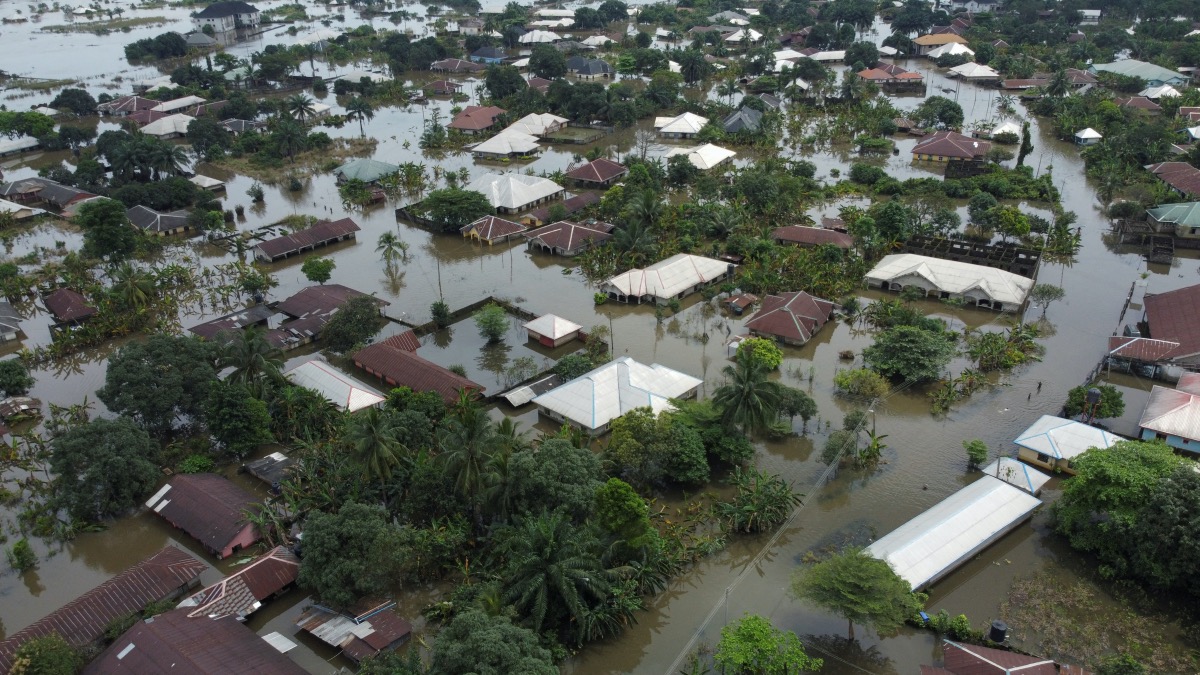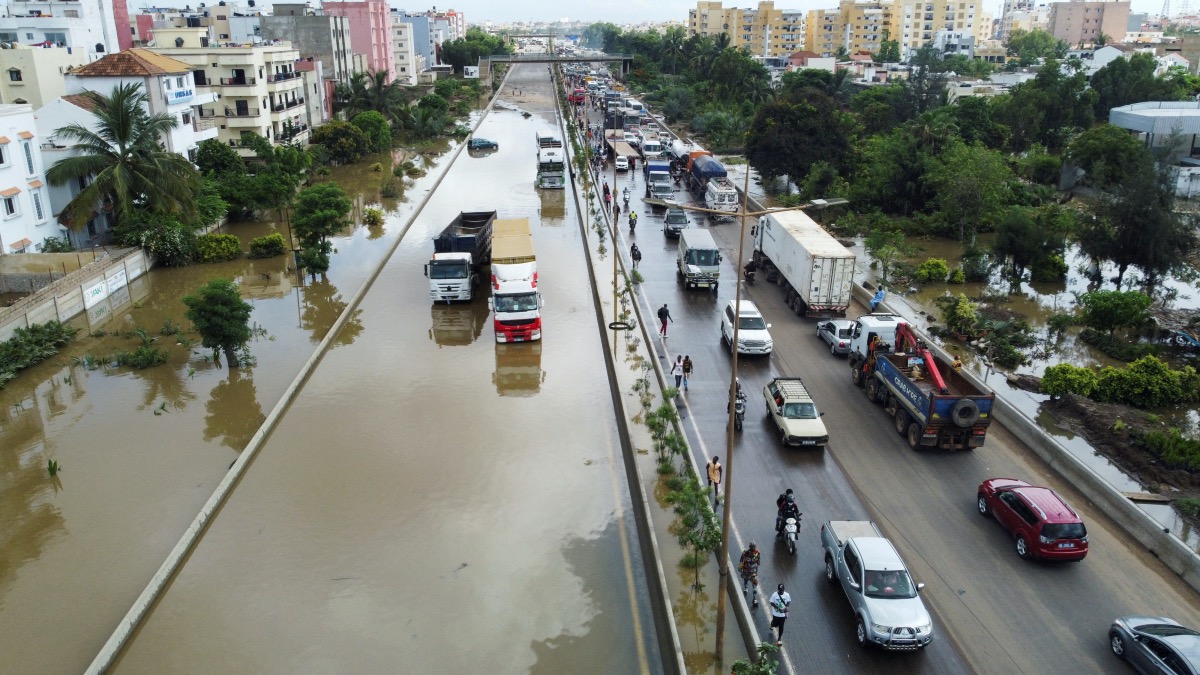Dakar, Senegal
Reuters
Unusually intense seasonal rains have drenched swathes of West and Central Africa since June, unleashing deadly floods that have affected millions and submerged farmland in 19 countries.
Below are factors that are making the floods worse and data on the scale of their impact.

An aerial view of the flooded Obagi community in Ahoada, Rivers state, Nigeria, on 22nd October. PICTURE: Reuters/Temilade Adelaja/File photo.
Where is the water coming from?
Most years, West and Central Africa see floods of varying severity between June and September, when seasonal rains sweep through the Sahel belt of countries along the southern fringes of the Sahara desert.
This season, a La Niña weather pattern caused above-average rainfall in parts of the region – while contributing to East Africa’s worst drought in 40 years.
Warming temperatures due to climate change are also increasing the intensity and frequency of Africa’s rains, according to United Nations climate experts.
This year, poor urban planning, silted-up rivers and land degradation worsened their impact. Water systems were quickly overloaded with disastrous consequences.
“The climate element is only one ingredient,” said flood specialist Andrew Kruczkiewicz of Columbia University’s Climate School.
“The term natural disaster is not really used anymore…[It] is seen as an oversimplification…when you really have to look at the overall socio-economic system.”
What is the impact of the floods so far?
By mid-October, the floods had affected five million people and one million hectares of cropland in a region where 43 million were already facing hunger during the June-August lean season, according to the UN’s World Food Programme.
In Nigeria, rising waters have killed at least 600 people, displaced over one million others, and worsened a cholera outbreak.
Eighteen of Chad’s 23 provinces have been flooded and over 19,000 head of livestock swept away, the UN’s Food and Agriculture Organization said last week.
In coastal West Africa, the rains have caused fatal flash floods in the capitals of Senegal and Sierra Leone.
In Cameroon’s Far North region, heavy rains have made rivers overflow, displacing tens of thousands in September, according to UN humanitarian office OCHA.
The agricultural impact is hard to estimate immediately, as some areas can benefit from seasonal flooding.
But the FAO predicts a 3.4 per cent drop in the region’s cereal output due to the floods and other factors.

An aerial view shows residents making their way through a flooded street after torrential rain caused intense flooding in Dakar, Senegal, on 6th August. PICTURE: Reuters/Ngouda Dione/File photo
Why have some countries been so badly hit?
Chad, which ranks near-bottom of the Notre Dame global adaptation index of countries’ vulnerability to extreme climate events, saw its most intense rains in 30 years.
They overloaded the water table and raised the level of Lake Chad – which straddles Chad, Cameroon, Niger, and Nigeria – above river levels, said Chadian hydrologist Hamit Abakar Souleyman.
As a result the Logone and Chari rivers, unable to disgorge into the lake, burst their banks, flooding Chad’s capital, N’Djamena, and the Cameroon border town of Kousseri.
We rely on our readers to fund Sight's work - become a financial supporter today!
For more information, head to our Subscriber's page.
The Benue River, which flows from Cameroon to Nigeria, rose so high that Cameroonian authorities had to release water from the Lagdo Dam, intensifying flood risks downstream, primarily in Nigeria, that country’s disasters agency said.
Heavy rains also hit much of Nigeria, their impact worsened by poor planning that experts say has allowed a rapidly growing urban population to build on flood plains, destroying wetlands that would normally act as a natural barrier.
“So no matter how light or heavy the rainfall is, you have less infiltration and more runoff, which results in flooding,” said Ibidun Adelekan a geography professor at Nigeria’s Ibadan University who worked on the February, 2022, UN climate report.
“There’s much that can be done to ensure that people don’t just build anyhow,” she said, adding that better dredging of major rivers would also help.
– Additional reporting by MAHAMAT RAMADANE in N’Djamena, Chad.






